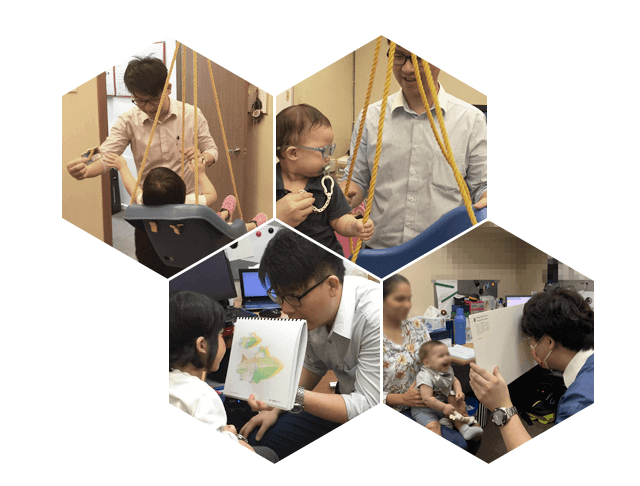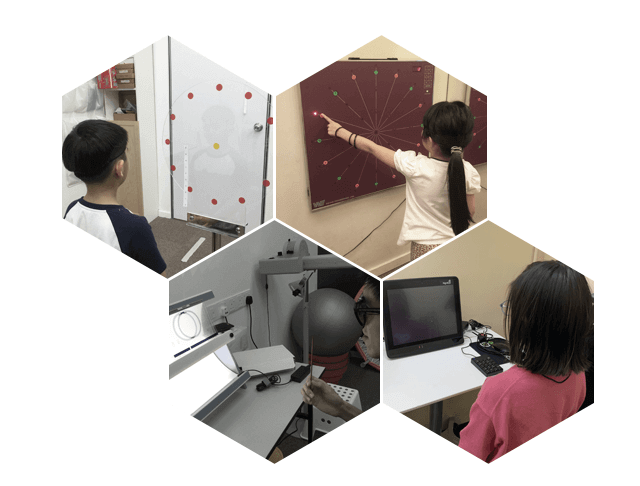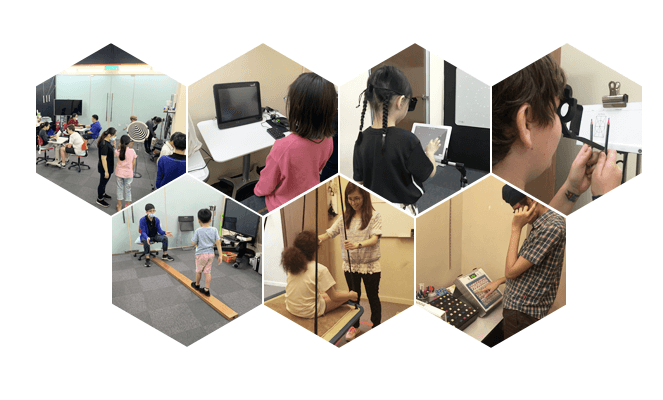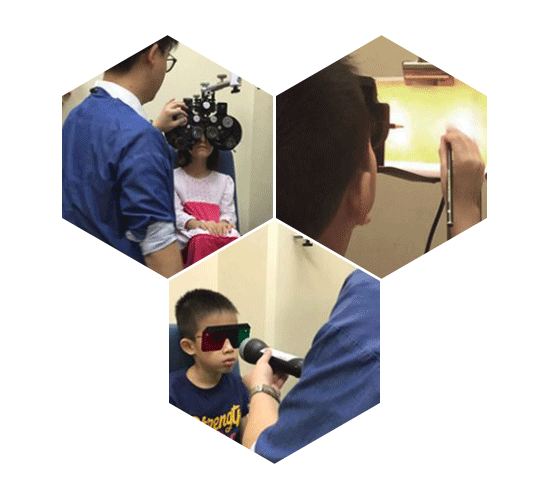Services
The Significance of GDD
Are GDD and Autism Similar?
No, GDD is not a form of autism. While both conditions involve developmental delays, they are distinct in nature. Autism is characterized by specific neurological symptoms, whereas GDD is a broader term encompassing various developmental delays across cognitive, motor, speech and language, as well as social and emotional domains (National Institute of Child Health and Human Development, 2021).


Understanding Visual Perception in Child Development
Visual Perception and Function: Building Blocks of Child Development. Visual perception and function are essential elements in a child’s developmental journey, encompassing their ability to observe, follow, and make sense of visual cues like colors, shapes, depth, and distance. When these functions are impaired, a child may encounter challenges in grasping concepts, understanding spatial relationships, and navigating their surroundings effectively (American Optometric Association, 2021).
For instance, a child facing issues with visual perception and function might struggle with depth perception, making everyday activities and social interactions more demanding. They could also experience difficulties in tracking and maintaining focus on objects, which can hinder reading and writing skills. These obstacles, in turn, may lead to cognitive, motor, and social development delays, contributing to conditions like GDD (American Optometric Association, 2021).
Challenges of Impaired Visual Function
Often, parents and teachers desire a child to exhibit greater focus and attention in academic or work settings, but they may not realize that a significant factor in achieving this lies within the realm of visual development. Visual development and a child’s overall growth are intricately intertwined. For instance, envision an 8-year-old who needs to sit still, copy information from the board, all of which necessitate stable visual skills and a well-developed reading foundation.
Moreover, children grappling with visual perception and function difficulties may find concepts like cause and effect, time, and space more challenging to grasp. Tasks requiring the coordination of visual and motor skills, such as catching a ball or riding a bike, might pose difficulties, potentially causing delays in motor development that can further contribute to conditions like GDD (American Optometric Association, 2021).
Importance of Early Intervention
Early identification and intervention are pivotal in addressing visual perception and function issues that may contribute to GDD. Children with GDD often benefit from a comprehensive approach, including occupational therapy, speech therapy, and physical therapy. Additionally, specialized vision therapy can be a valuable component, designed to enhance visual function and perception (American Optometric Association, 2021).


Comprehensive Approach to Addressing Visual Perception Issues
Vision therapy encompasses a range of activities designed to enhance a child’s visual tracking, focusing, depth perception, and visual-motor integration skills, including hand-eye coordination. Engaging in these exercises empowers children with visual perception and function challenges to enhance their learning abilities, social interactions, and daily task performance (American Optometric Association, 2021).
Summary
In summary, visual perception and function are pivotal factors in a child’s development, and their compromise can contribute to global developmental delay. Early detection and intervention are essential to address these issues and prevent further cognitive, motor, and social development delays. By embracing a multidisciplinary approach that includes vision therapy, children with GDD can enhance their visual perception and function, ultimately leading to improved overall development and a higher quality of life (National Institute of Child Health and Human Development, 2021; American Optometric Association, 2021).
